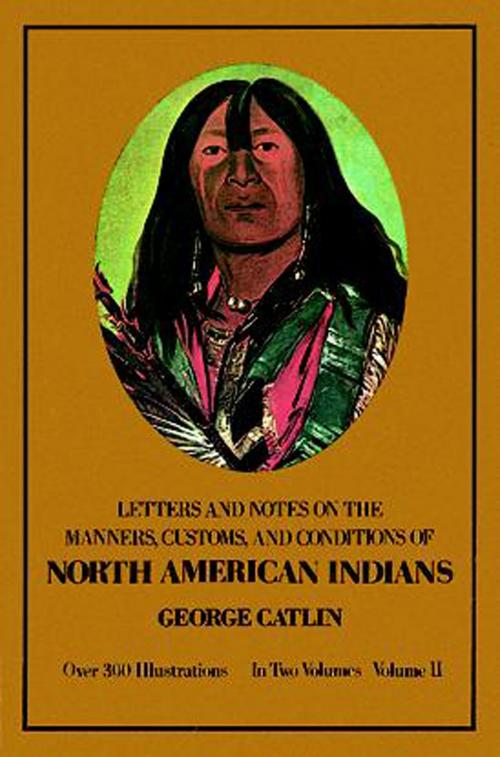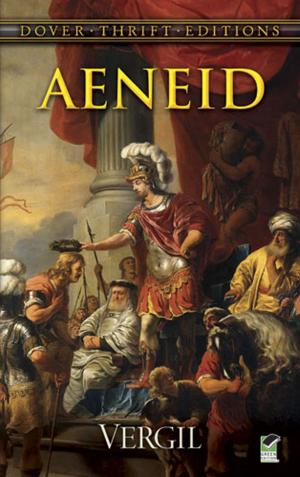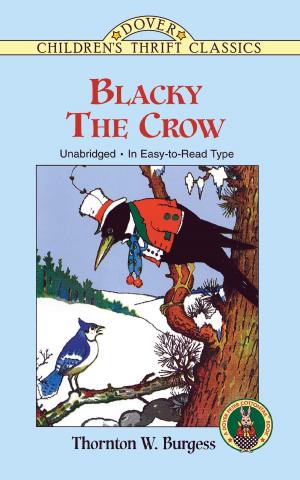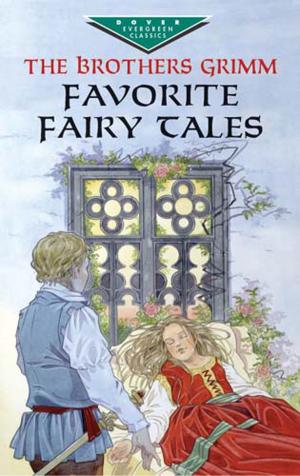Manners, Customs, and Conditions of the North American Indians, Volume II
Nonfiction, Social & Cultural Studies, Social Science, Cultural Studies, Customs & Traditions, History, Americas, Native American| Author: | George Catlin | ISBN: | 9780486156798 |
| Publisher: | Dover Publications | Publication: | August 8, 2012 |
| Imprint: | Dover Publications | Language: | English |
| Author: | George Catlin |
| ISBN: | 9780486156798 |
| Publisher: | Dover Publications |
| Publication: | August 8, 2012 |
| Imprint: | Dover Publications |
| Language: | English |
Crow, Blackfoot, Pawnee, Sioux, Comanche, Mandan, Choctaw, Cheyenne, Winnebago, Creek, Assiniboin; wild prairies teeming with buffalo; the sacred site of Catlinite stone — all were subjects of Catlin's letters and paintings. For eight years (1832–39) George Catlin ventured among the Indians of the North American Plains capturing in verbal and visual pictures every facet of their lives. For the rest of his life, Catlin carried to Eastern America and Europe the true pictures of the North American Indians enjoying their last years of freedom and dignity in their native home.
Catlin's book is an adventure. It is an adventure of the painter who was called "the great white medicine man" for his ability to paint. It is an adventure of a self-taught painter who vowed: "…nothing short of the loss of my life, shall prevent me visiting their country, and of becoming their historian." It is a story of the great mysteries of the many tribes of Indians he visited — the mysteries of costume, posture and myth, the mystery of weapons, hunts, and manly games, the mystery of a life still close in connection with the Great Spirit, with the buffalo and with the traditions of thousands of years, all which would soon be destroyed. "Art may mourn," said Catlin, "when these people are swept from the earth." Most importantly, his book is a book of direct, fresh, and accurate illustrations, illustrations that keep the best in Indian life alive. Now for the first time Catlin's illustrations are shown as he meant them to be seen. Through a process unknown when his book was first published, photographs of his actual paintings have been used to capture the many layers of depth and accurate depiction that could only be hinted at in the line drawings of the early editions. Two-hundred and fifty-seven photographs of Catlin's original oil paintings are included together with fifty-five of the original book illustrations. As a result this is the definitive edition of Catlin that can never be superseded, far more useful than any earlier edition.
George Catlin's North American Indians is still one of the most readable books about the Indians of the Plains, capturing, as it does, the tribes when they were still in touch with their most important traditions. It has also become an invaluable historic and ethnographic document for study of the American West. The Mandan tribe, which Catlin so carefully set down, disappeared in a small-pox epidemic only five years after his visit. Other tribes changed radically, their traditional mode of life seen only in Catlin's notes and illustrations. As Marjorie Halpin says in her introduction, " ... we can share the feeling of gratitude he expressed when he said, 'I was luckily born in time to see these people in their native dignity, and beauty, and independence … '"
Crow, Blackfoot, Pawnee, Sioux, Comanche, Mandan, Choctaw, Cheyenne, Winnebago, Creek, Assiniboin; wild prairies teeming with buffalo; the sacred site of Catlinite stone — all were subjects of Catlin's letters and paintings. For eight years (1832–39) George Catlin ventured among the Indians of the North American Plains capturing in verbal and visual pictures every facet of their lives. For the rest of his life, Catlin carried to Eastern America and Europe the true pictures of the North American Indians enjoying their last years of freedom and dignity in their native home.
Catlin's book is an adventure. It is an adventure of the painter who was called "the great white medicine man" for his ability to paint. It is an adventure of a self-taught painter who vowed: "…nothing short of the loss of my life, shall prevent me visiting their country, and of becoming their historian." It is a story of the great mysteries of the many tribes of Indians he visited — the mysteries of costume, posture and myth, the mystery of weapons, hunts, and manly games, the mystery of a life still close in connection with the Great Spirit, with the buffalo and with the traditions of thousands of years, all which would soon be destroyed. "Art may mourn," said Catlin, "when these people are swept from the earth." Most importantly, his book is a book of direct, fresh, and accurate illustrations, illustrations that keep the best in Indian life alive. Now for the first time Catlin's illustrations are shown as he meant them to be seen. Through a process unknown when his book was first published, photographs of his actual paintings have been used to capture the many layers of depth and accurate depiction that could only be hinted at in the line drawings of the early editions. Two-hundred and fifty-seven photographs of Catlin's original oil paintings are included together with fifty-five of the original book illustrations. As a result this is the definitive edition of Catlin that can never be superseded, far more useful than any earlier edition.
George Catlin's North American Indians is still one of the most readable books about the Indians of the Plains, capturing, as it does, the tribes when they were still in touch with their most important traditions. It has also become an invaluable historic and ethnographic document for study of the American West. The Mandan tribe, which Catlin so carefully set down, disappeared in a small-pox epidemic only five years after his visit. Other tribes changed radically, their traditional mode of life seen only in Catlin's notes and illustrations. As Marjorie Halpin says in her introduction, " ... we can share the feeling of gratitude he expressed when he said, 'I was luckily born in time to see these people in their native dignity, and beauty, and independence … '"















